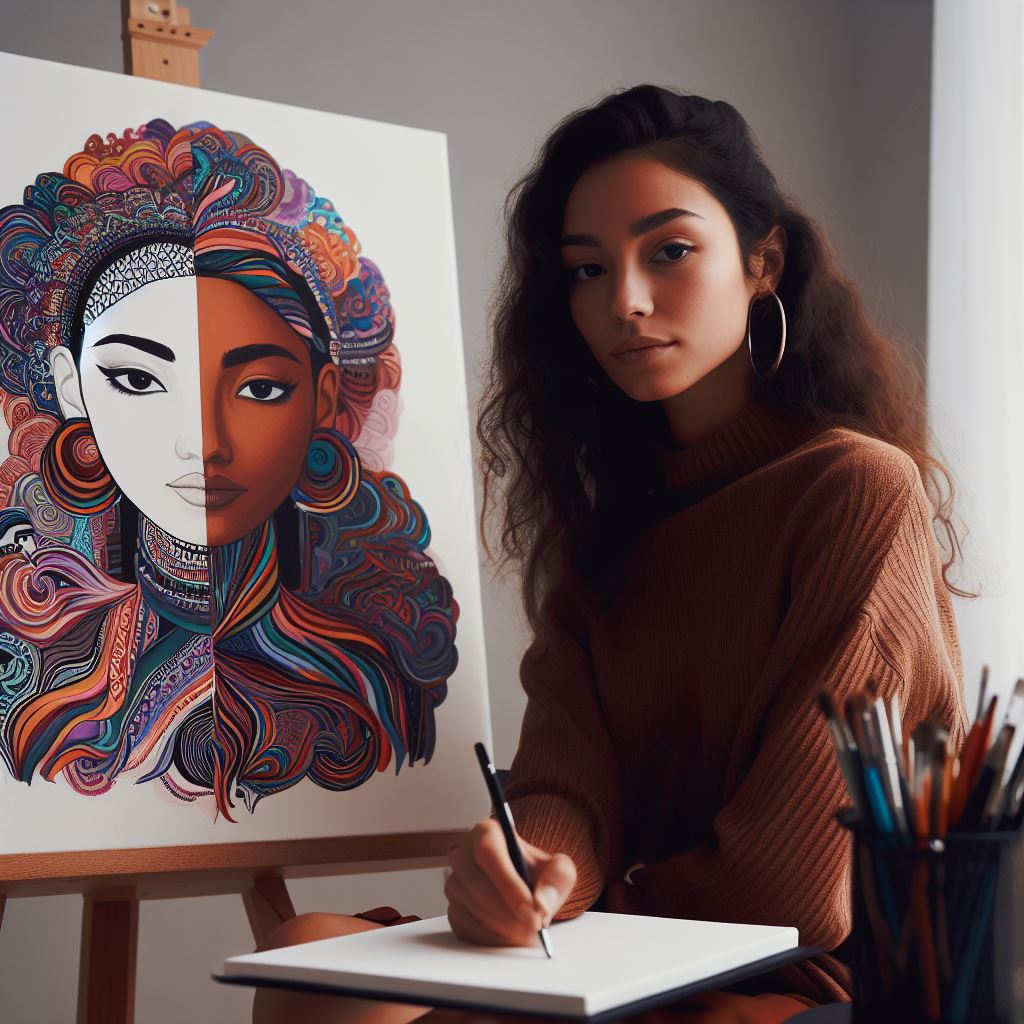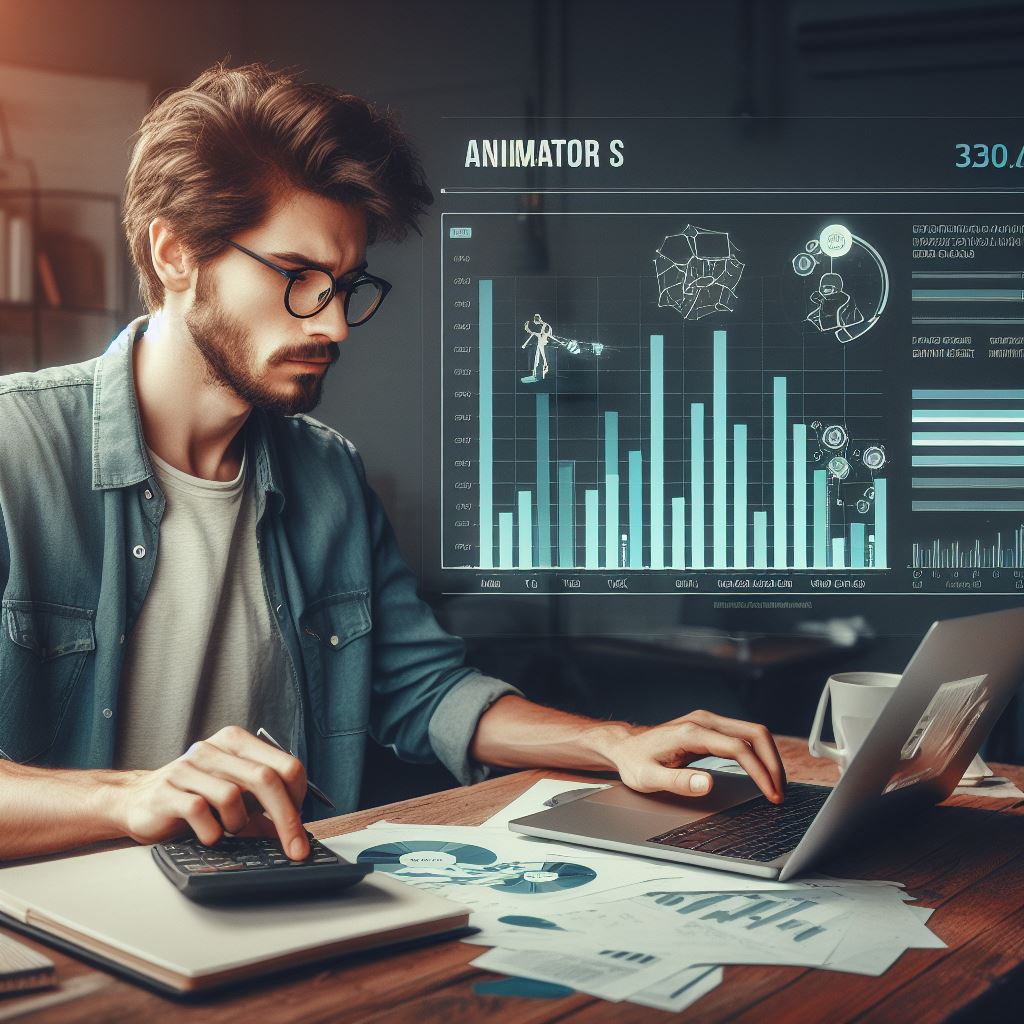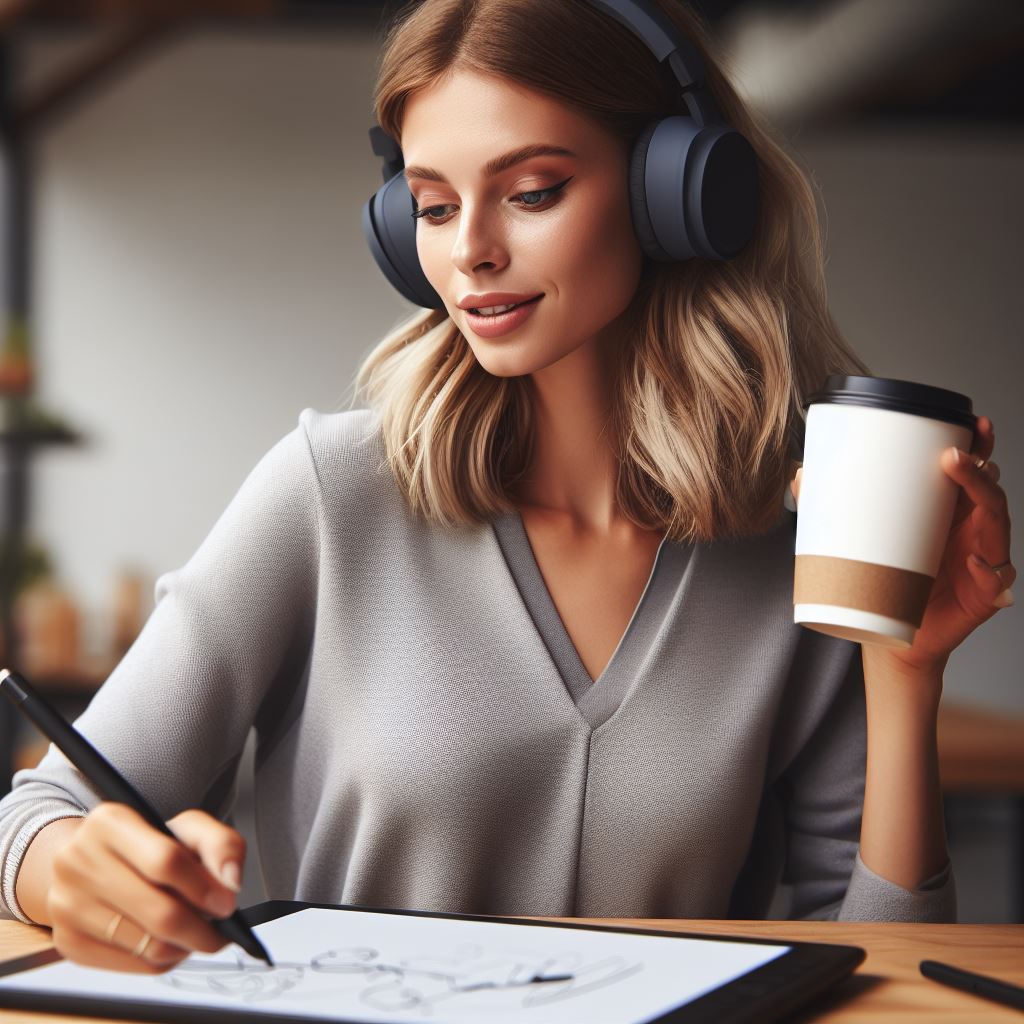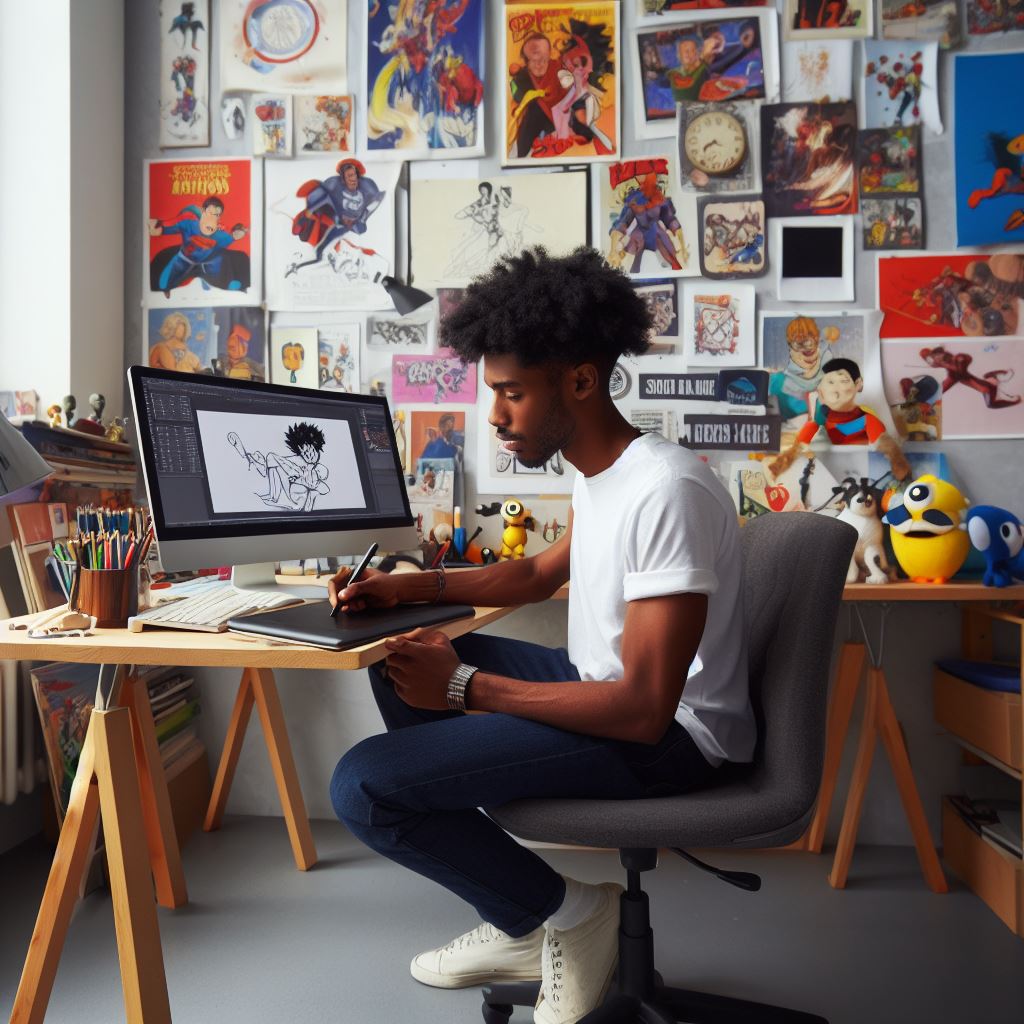Introduction
In today’s society, art has become more than a mere medium of self-expression.
Artists have increasingly embraced the power of their craft to deliver powerful social and political messages.
This blog post explores the intersection of art and activism in the United States, emphasizing balancing artistic expression with social change.
Art allows individuals to transcend boundaries and connect with communities on a deeper level.
It has the potential to reach diverse audiences and evoke emotions that words alone sometimes fail to convey.
Artist balancing art and activism is crucial as it combines the aesthetic appeal of artistic creativity with the urgency and significance of social issues.
Throughout history, US artists have played a vital role in shaping public opinion and challenging the status quo.
Their work has acted as a catalyst for change, sparking conversations and raising awareness about critical issues.
By incorporating activism into their art, these artists become powerful agents of social transformation.
Through this blog post, we will delve into the inspiring work of US artists who have fearlessly used their creativity as a tool for making powerful social and political statements.
Their art serves as a rebellious form of activism, challenging societal norms and advocating for justice.
Join us on this journey as we explore the vibrant world of US artists who are boldly combining art and activism to leave an indelible mark on society.
Art as a Tool for Political Expression
Historical Significance of Art as a Means of Political Expression
Art has played a pivotal role throughout history as a powerful tool for political expression.
Through artistic mediums such as paintings, sculptures, and literature, individuals have been able to communicate their beliefs, opinions, and dissent against oppressive systems.
Artistic expressions have often served as a persuasive force in bringing about political and social change.
From ancient civilizations to modern societies, art has consistently acted as a catalyst for political movements.
Throughout various historical periods, artists have utilized their creativity to challenge the established political order.
During the Renaissance, artists like Michelangelo and Leonardo da Vinci broke away from traditional religious narratives to explore humanism and political realism.
They used their art to depict political figures and social issues, opening up conversations about power and governance.
During the French Revolution, artists like Honoré Daumier used political caricature to satirize the ruling class and advocate for justice.
Transform Your Career Today
Unlock a personalized career strategy that drives real results. Get tailored advice and a roadmap designed just for you.
Start NowDadaism and Surrealism emerged in response to world wars and political unrest in the early 20th century.
Artists like Marcel Duchamp and Salvador Dalí used their creations to challenge societal norms and engage with political discourse.
Their provocative and unconventional artworks were intended to shock viewers and encourage critical thinking about political realities.
Role of Art in Challenging Societal Norms and Instigating Change
Art has the unique ability to challenge societal norms by presenting alternative perspectives and stirring emotions.
Artists often act as the voice of the marginalized, using their creativity to shed light on social injustices and initiate conversations about change.
By bringing important issues to the forefront, art can inspire individuals to question the status quo and demand equality and justice.
Artistic expressions have historically been pivotal in various civil rights movements.
During the Harlem Renaissance, African American artists like Jacob Lawrence and Langston Hughes used their art forms to challenge racial segregation and celebrate African American culture.
Their works depicted the struggles and aspirations of their community, fostering a sense of unity and empowerment.
The feminist art movement of the 1970s also utilized art as a means of challenging traditional gender norms.
Artists like Judy Chicago and Guerrilla Girls highlighted women’s issues through provocative and visually striking artworks.
Their use of imagery and symbolism forced society to confront the inequalities faced by women and led to significant advancements in the feminist movement.
Examples of Influential US Artists who Effectively Used Art for Activism Purposes
Numerous US artists have employed their creative talents to effectively advocate for social and political change.
Keith Haring, an artist and activist, raised awareness about HIV/AIDS through bold and vibrant paintings, advocating for safe sex practices.
Haring’s murals transformed public spaces into platforms for spreading information.
Kara Walker, influential for her powerful silhouettes, explores race, gender, and power themes.
Her artwork challenges historical narratives and confronts societal prejudices, forcing viewers to critically examine their own biases and assumptions.
Street artist Shepard Fairey gained international recognition for his iconic “Hope” poster featuring Barack Obama during his presidential campaign.
The image captured the optimism and inspiration of the movement, embodying the desire for political change and social progress.
In general, art has a rich and significant history as a means of political expression.
Transform Your Career Today
Unlock a personalized career strategy that drives real results. Get tailored advice and a roadmap designed just for you.
Start NowBy challenging societal norms, initiating conversations, and advocating for change, artists have the power to shape public opinion and contribute to progressive movements.
Through the works of influential US artists like Keith Haring, Kara Walker, and Shepard Fairey, we can witness the transformative power of art in activism.
Read: US Art Taxation: Financial Tips and Deductions for Artists
Artwork Addressing Social Issues
Many artists actively engage with social issues like racial inequality, gender discrimination, and LGBTQ+ rights.
Let’s explore some specific artworks that shed light on these pressing issues.
- “Untitled (Your Body is a Battleground)” by Barbara Kruger: This iconic artwork critiques the objectification of women’s bodies and challenges gender stereotypes.
- “The Dinner Party” by Judy Chicago: This installation celebrates women’s achievements throughout history and highlights their often overlooked contributions.
- “I Am” by Ken Gonzales-Day: This photographic series documents racially motivated violence against marginalized communities, aiming to raise awareness and promote empathy.
- “Self-Portrait as a Free Woman” by Frida Kahlo: This powerful self-portrait portrays Kahlo as a liberated woman, challenging societal expectations placed on women at the time.
- “Silence=Death” by the collective ACT UP: This infamous poster brought attention to the AIDS crisis and demanded government action.
- “Sensation” by Chris Ofili: This controversial painting features a portrait of a black Virgin Mary, exploring issues of race, religion, and cultural identity.
- “Love is the Message, The Message is Death” by Arthur Jafa: This mesmerizing video collage confronts the African American experience, celebrating resilience and addressing systemic racism.
The impact of these artworks on society and the conversations they spark
Barbara Kruger’s “Untitled (Your Body is a Battleground)” sparks conversations on gender equality, challenging societal norms and empowering women.
Judy Chicago’s “The Dinner Party” reevaluates historical erasure, amplifying marginalized voices and promoting inclusivity in artistic representation.
Ken Gonzales-Day’s “I Am” confronts violence against minorities, shedding light on systemic injustices and fostering empathy.
Frida Kahlo’s “Self-Portrait as a Free Woman” challenges gender roles, empowering women to embrace agency against societal expectations.
ACT UP’s “Silence=Death” poster draws attention to government inaction during the AIDS crisis, sparking activism for LGBTQ+ rights.
Chris Ofili’s “Sensation” triggers dialogues on race, religion, and cultural representation, challenging the Western canon’s limited perspectives.
Arthur Jafa’s “Love is the Message, The Message is Death” captures African American experiences, provoking discussions on institutional racism and community resilience.
In review, these artworks catalyze change, sparking reflection, conversation, and activism for an inclusive and equitable future.
Read: Strategies for US Artists to Break Into the Global Scene
Artwork Responding to Political Climate
How artists respond to political events and policies through their art
In times of political turmoil, artists have often used their creative expression to voice their opinions and respond to the current state of affairs.
Through diverse artistic mediums, they convey powerful messages that reflect their concerns, fears, and hopes for the future.
Whether it be paintings, sculptures, installations, or performances, art becomes a channel through which they communicate their critique and dissent.
Artists often draw inspiration from political events, policies, and the actions of government bodies.
Their works visually comment on societal issues, questioning decisions made by those in power and addressing socio-political problems.
They utilize metaphors, symbolism, and provocative imagery, provoking discussions and encouraging viewers to reflect on their role in shaping the political climate.
Transform Your Career Today
Unlock a personalized career strategy that drives real results. Get tailored advice and a roadmap designed just for you.
Start NowProminent US artists who use their platforms to critique political figures and actions
Prominent artists in the United States have consistently utilized their platforms to critique political figures and actions.
Artists like Shepard Fairey, known for his iconic “Hope” poster depicting Barack Obama, have made their mark by creating visually striking images that symbolize dissent.
Fairey’s work not only represents his support for Obama but also acts as a reminder of the power of political art in inspiring change.
Another notable artist is Banksy, whose thought-provoking street art often provides biting social and political commentary.
Banksy’s stenciled graffiti pieces highlight injustice, corruption, and political oppression.
His anonymity allows his art to speak for itself, ensuring that the focus remains on the issues being addressed rather than the artist’s identity.
The role of art in promoting dialogue and raising awareness about political issues
Art plays a crucial role in promoting dialogue and raising awareness about political issues.
It serves as a catalyst for discussion, bridging divides and encouraging individuals to question, understand, and empathize.
Artists often use their works as a means to educate the public, shedding light on complex political topics and stimulating critical thinking.
Through art, marginalized communities can find a voice and have their experiences acknowledged.
Artists from underrepresented backgrounds use their work to challenge systems of oppression, drawing attention to social injustice and advocating for change.
Artwork that addresses political issues has the power to initiate meaningful conversations, spark activism, and inspire collective action.
Furthermore, art provides an avenue for raising awareness on a global scale.
Artists utilize social media and digital spaces to share creations globally, connecting people worldwide. Democratization enables political messages to transcend borders.
Essentially, art has the unique ability to respond to political events and policies in a captivating and thought-provoking manner.
By using their creative platforms, artists effectively critique political figures and actions, initiating dialogue, and raising awareness on contentious issues.
Through their works, they challenge societal norms, inspire change, and ultimately contribute to shaping the political landscape.
Art remains a vital tool for promoting dialogue, encouraging empathy, and making a lasting impact on political discourse.
Read: US Interior Designers: From Freelance to Firm Employment

Collaboration between Artists and Activists
The Power of Collaboration in Art and Activism
Collaboration between artists and activists can lead to powerful and impactful projects that capture public attention.
Transform Your Career Today
Unlock a personalized career strategy that drives real results. Get tailored advice and a roadmap designed just for you.
Start NowWorking together, artists and activists can combine their unique skills and perspectives to create works that inspire change.
Artists bring creativity, storytelling, and visual representation, while activists bring passion, knowledge, and a deep understanding of the issues.
Through collaboration, artists can reach a wider audience and engage people who may not typically be interested in activism.
Collaboration also allows activists to communicate their message in a more accessible and emotional way, evoking empathy and understanding.
When artists and activists join forces, they amplify each other’s voices and create a stronger collective impact.
Notable Collaborations between Artists and Activists in the United States
One notable collaboration is between Shepard Fairey, the artist behind the iconic Obama “Hope” poster, and the Amplifier Foundation.
Amplifier Foundation is a non-profit organization that uses art to amplify voices of grassroots movements.
Fairey worked with Amplifier to create the “We the People” series, featuring portraits of diverse Americans, to protest against Trump’s policies.
Another collaboration is between Ai Weiwei, a Chinese artist, and Chelsea Manning, a former U.S. Army soldier and whistleblower.
They worked together on the “Hansel & Gretel” project, exposing the American government’s surveillance mechanisms.
Their collaboration shed light on privacy issues and sparked conversations about government control.
Benefits and Challenges of Combining Artistic Talent with the Passion of Activists
Combining artistic talent with the passion of activists brings numerous benefits to both parties.
Artists gain a deeper understanding of the issues they depict and are pushed to create impactful and thought-provoking works.
Activists, on the other hand, benefit from the emotional appeal and broader reach that art provides.
However, collaborations can also present challenges.
Artistic visions may clash with the practical goals of activists, requiring compromise and careful negotiation.
Finding the right balance between artistic expression and activist messaging can be complex.
Additionally, collaborations may face criticism from those who believe art should remain separate from activism.
Despite these challenges, the benefits surpass the difficulties.
The power of collaboration opens doors for diverse perspectives and encourages mutual growth and learning between artists and activists.
Transform Your Career Today
Unlock a personalized career strategy that drives real results. Get tailored advice and a roadmap designed just for you.
Start NowUltimately, when artists and activists come together, they have the potential to create lasting change and shape a better society.
By harnessing the creative energy of art and the determination of activism, collaborations can be transformative and impactful.
Read: The Role of Tech & AI in USA’s Interior Design Landscape
The Role of Art Institutions and Galleries
In the world of art, institutions and galleries play a crucial role in providing support, platforms, and amplification for artists engaged in activism.
Role of art institutions in supporting artists engaged in activism
Art institutions, such as museums and art centers, have become essential in supporting and nurturing artists who embrace activism as a core element of their work.
These institutions provide spaces where artists can exhibit their thought-provoking creations and explore social and political issues.
Through curated exhibitions, art institutions often showcase artists whose work challenges the status quo, addresses pressing global concerns and promotes social justice.
They actively seek out artists whose art merges with activism, encouraging dialogue, and inspiring change.
Moreover, art institutions take on the responsibility of promoting artist residencies, fellowships, and grants that specifically target socially and politically engaged artists.
By offering financial support and resources, these institutions encourage artists to pursue their passions while advocating for change through their art.
Galleries that provide a platform for artists focusing on social and political issues
Alongside art institutions, galleries specializing in socially and politically focused art have emerged as powerful platforms for artists to express their activism.
These galleries curate exhibitions centered on urgent global issues, such as environmental sustainability, racial justice, LGBTQ+ rights, and gender inequality.
These galleries actively seek out artists whose work challenges the existing power structures, sparks conversations, and sheds light on marginalized voices.
They provide a safe space for artists to explore and present their work, cultivating a community that embraces diverse narratives and perspectives.
Galleries that emphasize art activism provide a unique platform for artists to not only showcase their creations but also engage with audiences through panel discussions, artist talks, and workshops.
These interactive experiences create an inclusive environment where art becomes a catalyst for social change.
Impact of these institutions and galleries on promoting and amplifying the voices of artists
The presence of art institutions and galleries dedicated to the promotion of socially and politically focused art has had a profound impact on artists and society as a whole.
Firstly, these institutions and galleries provide validation and recognition to artists engaged in activism.
By giving them a platform to exhibit their work, artists’ voices are amplified, granting them the opportunity to reach wider audiences and provoke meaningful conversations.
Secondly, the support and resources offered by art institutions and galleries enable artists to create impactful and high-quality work.
Transform Your Career Today
Unlock a personalized career strategy that drives real results. Get tailored advice and a roadmap designed just for you.
Start NowFinancial assistance and collaboration opportunities in these spaces foster artistic growth and innovation.
The focus on socially engaged art attracts diverse viewers, encouraging activism.
Art exposes individuals to important issues, prompting reflection and action.
Art institutions inspire artists to drive change, challenging norms and promoting inclusivity.
Basically, art institutions and galleries play a vital role in supporting artists engaged in activism.
By providing platforms, resources, and validation, these spaces empower artists to explore social and political issues through their work.
The impact of these institutions and galleries goes beyond art, as they spark conversations, inspire change, and promote a more inclusive society.
Conclusion
Hook: The Intersection of Art and Activism in the United States
In the vibrant landscape of American creativity, the intersection of art and activism has become a powerful force.
The Importance of Balancing Art and Activism
Art serves as a dynamic medium for expression, while activism fuels societal change.
The fusion of the two forms a compelling narrative.
This exploration delves into impactful endeavors as US artists navigate a delicate balance between artistic expression and advocacy.
Artists channel creativity beyond galleries, sparking conversations and provoking contemplation.
In a world where every stroke or note carries potential for social impact, these artists pioneer change.
[E-Books for Sale]
The Big Book of 500 High-Paying Jobs in America: Unlock Your Earning Potential
$19.99 • 500 High-Paying Jobs • 330 pages
Explore 500 high-paying jobs in America and learn how to boost your career, earn more, and achieve success!
See All 500 High-Paying Jobs of this E-Book
1001 Professions Without a Degree: High-Paying American Jobs You Can Start Now
$19.99 • 1001 Professions Without a Degree • 174 pages
Discover 1001 high-paying jobs without a degree! Unlock career tips, skills, and success strategies for just $19.99!




